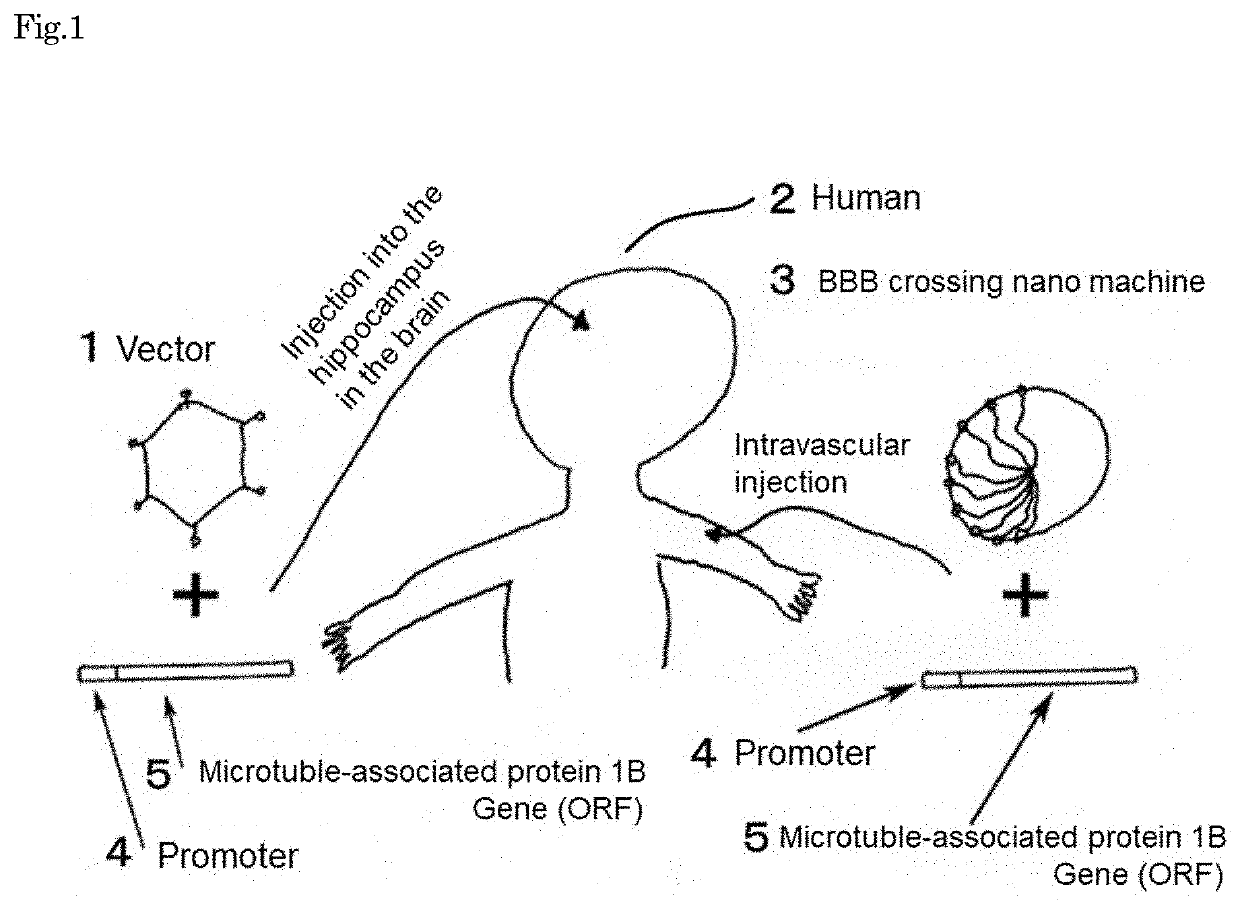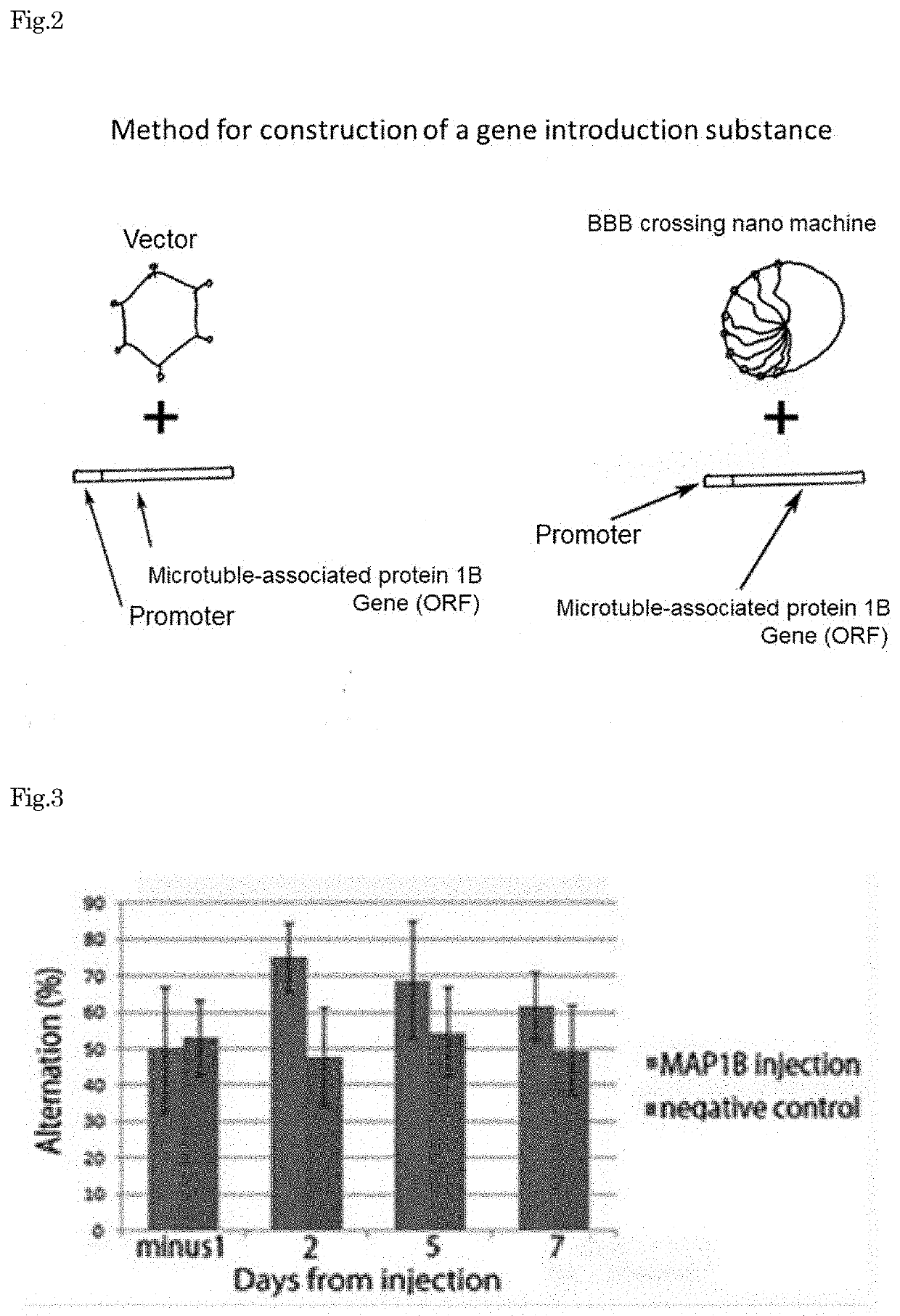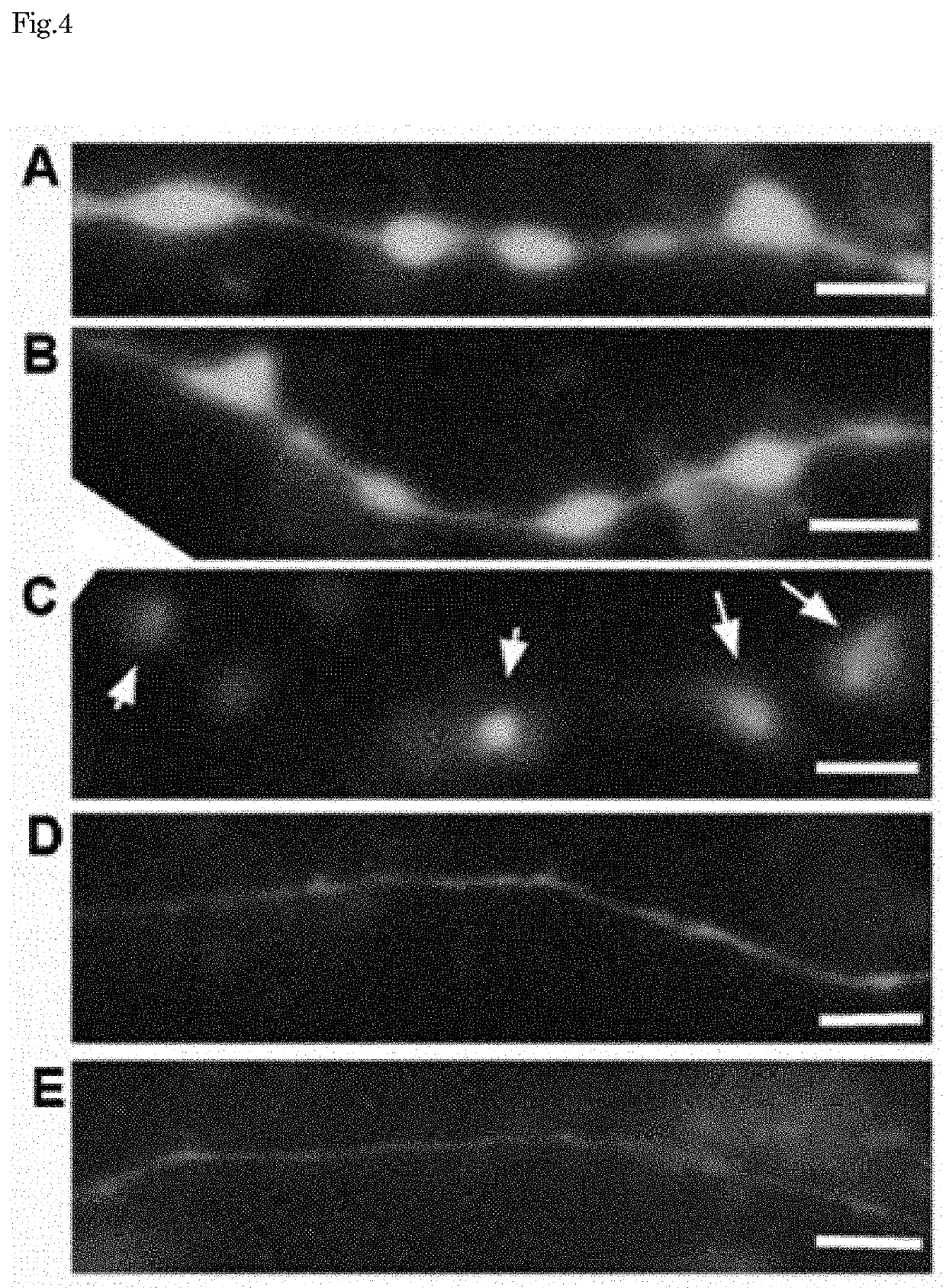Therapeutic agent for alzheimer's disease
a technology for alzheimer's disease and therapy agents, applied in the direction of drug compositions, peptides, genetic material ingredients, etc., can solve the problems of ineffective causal therapy, undecided how the nerve cells in the brain are damaged by amyloid, and inability to achieve the effect of improving dementia
- Summary
- Abstract
- Description
- Claims
- Application Information
AI Technical Summary
Benefits of technology
Problems solved by technology
Method used
Image
Examples
example 1
[0062]A method in which a mouse microtubule-associated protein 1B gene bound with a lentiviral vector is stereotactically injected into the right hippocampus by puncturing in the skull of an Alzheimer's disease model mouse to improve dementia in Alzheimer's disease.
[0063]The mouse microtubule-associated protein 1B gene was cloned as follows. Total RNA was prepared from the brain of BL6 mice using the RNeasy Mini Kit (Quiagen). The total RNA was then reverse transcribed by SuperScript III (Invitrogen) using poly T primers. A cDNA library was constructed by a standard method and the Map1b gene was cloned by screening using the Map1b gene fragment as a probe, whose nucleotide sequence was confirmed. The mouse microtubule-associated protein 1B gene (the protein coding region of the Map1b gene) was bound to a lentiviral vector using the Lenti-X™ 293T Cell Line and the Lenti-X HTX Packaging System (Clontech). 1 microliter of this chimeric gene solution was injected into model mouse B6SJLT...
example 2
[0065]Confirmation by Western blotting
[0066]In Alzheimer's disease, the number of spines has been found to be reduced, which is determined by form. It was found that the same thing can be detected by the biochemical method of measuring the target protein, which is electrophoresis→western blotting. The transformation model mouse B6SJLTg (APPSwFILon, PSEN1*M146L*L286V) 6799Vas / Mmjax used this time was injected with the lentiviral vector-microtubule-associated protein 1B gene into the right hippocampus, and one week later, the left and right hippocampi were taken out and electrophoresed. (SDS-PAGE).
[0067]That is, the hippocampus was homogenized in 1 nil Eppendorf in a double volume of 4× laemli sample buffer (Laemmli sample buffer, Bio-Rad, Tokyo) containing a protease inhibitor, 10-20 microliter of which was electrophoresed in a 12% miniprothean TGX gel (Bio-Rad). After transfer to polyvinylidene difluoride membrane (PVDF membrane), it was reacted using primary antibody (HOMER1 rabbit...
PUM
| Property | Measurement | Unit |
|---|---|---|
| Fraction | aaaaa | aaaaa |
| Digital information | aaaaa | aaaaa |
| Therapeutic | aaaaa | aaaaa |
Abstract
Description
Claims
Application Information
 Login to view more
Login to view more - R&D Engineer
- R&D Manager
- IP Professional
- Industry Leading Data Capabilities
- Powerful AI technology
- Patent DNA Extraction
Browse by: Latest US Patents, China's latest patents, Technical Efficacy Thesaurus, Application Domain, Technology Topic.
© 2024 PatSnap. All rights reserved.Legal|Privacy policy|Modern Slavery Act Transparency Statement|Sitemap



